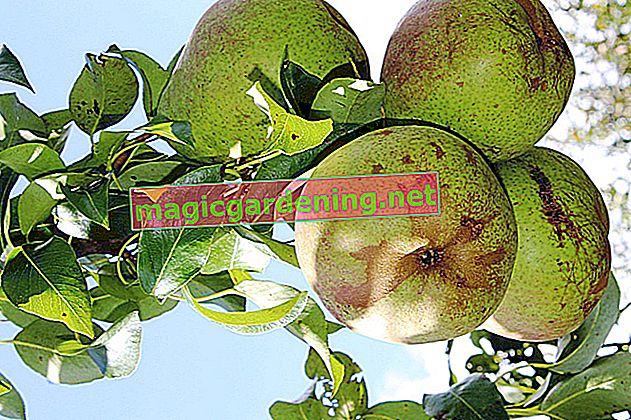
Column pears as “real” column fruit
In contrast to columnar cherries or columnar peaches, columnar pears can actually be raised very slender, whereby fruits can also form directly on the trunk of the columnar pears. Column pears usually grow to around 250 cm tall if not consciously raised to a lower tree height. A width of around 30 to 40 cm makes sense, on the one hand to use the privacy protection function of the column fruit and on the other hand to enable a higher yield through the fruit wood branching off the trunk. The most popular varieties of pillar pear are:
- Pyrus communis 'Doyenne du Comice'
- Pyrus communis 'Obelisk'
- Pyrus communis 'Conference'
- Pyrus communis 'Concorde'
- Pyrus communis 'Bambinella'
- Pyrus communis 'Condora'
- Pyrus communis 'Decora'
also read
- Cut a columnar pear optimally
- Different varieties of the column cherry
- Are there different types of wisteria?
Some of these varieties do not grow strictly in columnar form all by themselves. However, they can all be trained to become columnar fruit with relatively little effort.
The pillar pear 'Decora'
The column pear 'Decora' is a type of pear that is also preferred in the agricultural cultivation of pears. This variety produces fruits with a particularly sweet taste and soft pulp. The fruits of the 'Decora' variety, which ripen from the end of September to the beginning of August, can easily be stored until around mid-December. Due to its upright growth, this pear is also suitable for growing in a pot on a sunny or partially shaded balcony. However, since this is a deep-rooted plant, the respective planter must not be too small or too small.
The pillar 'Conference'
As a typical pollinator variety, the 'Conference' variety fulfills a special purpose in the cultivation of pears: Since pears require pollination by pollen from other pear trees in the vicinity for fruit set, you can use this pear variety as a good pollinator variety. In addition, this pear variety also has long-lasting fruits with a very juicy texture of the pulp.
Tips
If lateral fruit shoots are cut back to a length of around 2 to 3 buds in June, they will develop into fruit wood in the same year.








